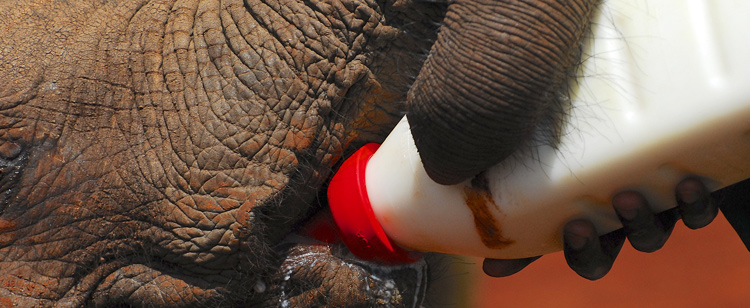Milk formula for baby elephants being developed
With baby elephants left orphaned due to the increase in elephant poaching for their ivory, several attempts have been made to create a milk formula in order to feed these elephants. To date, many elephants have died in captivity from side effects such as diarrhoea as a result of the surrogate formula which they were fed.
Prof Osthoff together with researchers from Zimbabwe are working on a milk formula for elephants. They are studying Elephant milk in a full lactation period of two years. During lactation, the composition of the milk changes to such an extent that a single surrogate formula will not be sufficient. Four different formulas should probably be designed.
Prof Osthoff says that of the different species he has researched, elephants are the most interesting and deviate most from the known species.
Although his research to develop surrogate milk is adding much value to the wildlife industry, and although he finds this part of his work very exciting, his research focus is on food science and nutrition. “What is currently authentic in milk research is the study of the fat globules with content, the structure and composition of the casein micelle, and the prebiotic sugars. The knowledge which is gained helps to improve the processing, development of new food products, and development of food products for health purposes,” says Prof Osthoff.



